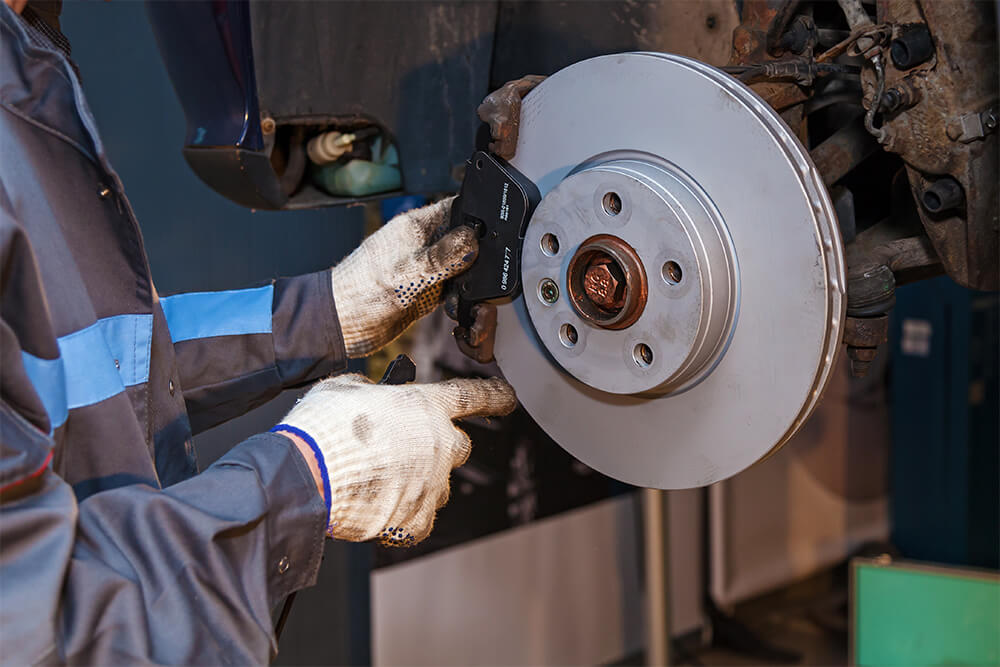How to Tell If Rotors are Warped
To check for warped rotors, drive the car and feel for pulsating brake pedal vibrations. Another indicator is uneven brake pad wear.
Rotors are a critical component of a vehicle’s braking system. Warped rotors can lead to pulsating brake pedal vibrations and uneven wear on brake pads. This issue can compromise the vehicle’s braking performance and safety. By understanding the signs of warped rotors and addressing them promptly, drivers can ensure their vehicle operates smoothly on the road.
We will discuss how to detect warped rotors, the causes of this issue, and the steps to take to fix it. Let’s dive into the details to help you maintain your vehicle’s braking system in top condition.

Credit: mechanics.stackexchange.com
Common Signs Of Warped Rotors
Warped rotors can cause safety hazards and compromise the performance of your vehicle. It’s crucial to be aware of the common signs of warped rotors to prevent potential accidents and costly repairs.
Vibration When Braking
If you feel a vibration in the steering wheel or brake pedal when applying the brakes, it can be a clear indication of warped rotors. This pulsating sensation is typically felt during braking and can intensify as the vehicle’s speed increases.
Brake Pedal Pulsation
Uneven brake pedal pulsation is another common indicator of warped rotors. When pressing the brake pedal, you may notice a rhythmic throbbing sensation, suggesting that the rotors are not level and are causing the brake pads to make inconsistent contact.

Credit: www.youtube.com
Causes Of Warped Rotors
Warped rotors can have various causes, such as excessive heat or uneven braking. Signs of warped rotors include vibration or pulsation when applying the brakes, uneven wear on brake pads, and reduced stopping power.
Excessive Heat
Brake system generating high temperatures can cause rotor warping.
Excessive heat due to prolonged or aggressive braking leads to rotor distortion.
Improper Torqueing Of Lug Nuts
Uneven tightening of lug nuts causes rotor unevenness leading to warping.
Incorrect torque specifications can result in rotor warping over time.
Diagnosing Warped Rotors
Wondering if your car’s rotors are warped? A common sign is a pulsating feeling when you brake. Additionally, you may hear squeaking or grinding noises. If you notice these symptoms, it’s essential to have your rotors checked by a professional mechanic.
Visual Inspection
Warped rotors can often be visually identified through simple inspections. Look for uneven wear or scoring marks on the rotor surface.
Run your fingers across the rotor to feel for grooves and irregularities that could indicate warping.
Measuring Rotor Thickness
To check for warping, measure the rotor thickness at several points using a caliper. Compare the measurements to the manufacturer’s specifications.
If there are significant variations, it could be a sign of warping that needs attention.
Preventing Warped Rotors
Proper maintenance and care can go a long way in preventing rotor warping, which can lead to costly repairs and compromise vehicle safety. By following these tips, you can ensure that your rotors remain in optimal condition, reducing the likelihood of warping.
Proper Break-in Of New Rotors
When installing new rotors, it’s crucial to follow the manufacturer’s guidelines for proper break-in. This typically involves gradually bedding in the new rotors by applying moderate braking force over a series of stops until the surface of the rotor establishes an even layer of pad material. This process helps to minimize the risk of uneven heat distribution, reducing the likelihood of warping.
Regular Maintenance
Regular maintenance is crucial for preserving rotor integrity. This includes routine inspection for signs of wear, such as thinning or scoring, and addressing any issues promptly. Additionally, ensuring proper torque when the wheel is reinstalled can help prevent warped rotors. Periodic brake fluid flushes can also prevent corrosion and ensure efficient brake performance.
Repairing Warped Rotors
Identifying warped rotors involves noticing vibration during braking, steering wheel shaking and uneven braking. Addressing warped rotors necessitates professional inspection and potential resurfacing or replacement to ensure safe driving performance. Regular maintenance can prevent rotor warping and maintain optimal vehicle safety.
Repairing Warped Rotors Machining the Rotors To repair warped rotors, one option is to machine the rotors. This involves removing a small layer of material from the surface of the rotor to create a smooth, even surface. Machining the rotors is a cost-effective solution if the rotors are still within their minimum thickness specifications. During the machining process, a brake lathe is used to remove the high spots on the rotor. This restores the rotor’s flatness and promotes even pad contact. The brake lathe carefully shaves off a thin layer of metal, helping to eliminate the pulsating sensation and excessive vibrations caused by warped rotors. Replacing the Rotors If machining is not an option or the rotors are too thin, they will need to be replaced. The first step in replacing the rotors is to remove the brake caliper and pads. This can be done by loosening the bolts and sliding the caliper off the rotor. Take care not to damage the brake line during this process. Once the caliper is removed, the old rotor can be taken off by removing the retaining screw or bolts. It is important to keep track of the order and orientation of any retaining hardware for easier installation of the new rotor. When installing the new rotor, make sure it is clean and free of any oil or grease. Carefully place the new rotor onto the hub and secure it with the retaining screw or bolts. Reinstall the brake caliper and pads, making sure they are properly aligned, and tighten the bolts securely. Final Thoughts In conclusion, repairing warped rotors can be done through machining or rotor replacement. Machining the rotors is a more cost-effective option if the rotors are still within their minimum thickness specifications. However, if the rotors are too thin or damaged, they will need to be replaced. It is important to address warped rotors promptly to ensure safe and smooth braking performance. Regular inspection and maintenance of the braking system can help identify and prevent rotor warping.
Credit: heathsauto.com
Frequently Asked Questions On How To Tell If Rotors Are Warped
How Do You Check If My Rotors Are Warped?
To check for warped rotors, drive the car and apply brakes. If you feel vibration or hear noise, the rotors may be warped. You can also visually inspect for uneven wear.
What Happens If You Drive On Warped Rotors?
Driving on warped rotors can cause vibration, noise, and poor braking performance. It can also lead to uneven brake pad wear and potential safety hazards. Get the rotors inspected and replaced to ensure safe and smooth driving experience.
Can You Feel A Warped Rotor Without Braking?
Warped rotors can be felt even without braking.
What Are The Signs Of Bad Rotors?
Common signs of bad rotors include vibrations or pulsations when braking, a squealing or squeaking noise, longer stopping distances, and uneven wear on brake pads. These issues can affect the overall performance and safety of your vehicle. If you notice any of these signs, it is important to have your rotors inspected and replaced if necessary.
Faq 1: How Do I Know If My Car’s Rotors Are Warped?
If you feel pulsation in the brake pedal or notice the car shaking when braking, it could indicate warped rotors.
Faq 2: What Causes Rotor Warping?
Rotor warping can be caused by excessive heat, uneven cooling, or aggressive braking that leads to friction and distortion.
Faq 3: Can Rotors Become Warped Over Time?
Yes, rotors can become warped over time due to wear and tear, heat buildup, and improper maintenance.
Conclusion
Recognizing the signs of warped rotors early can save you time and money. Regular inspection and maintenance are key to ensuring safe and smooth brake performance. By addressing any issues promptly, you can maintain your vehicle’s safety and extend the life of your braking system.
Stay informed, and trust your instincts.


